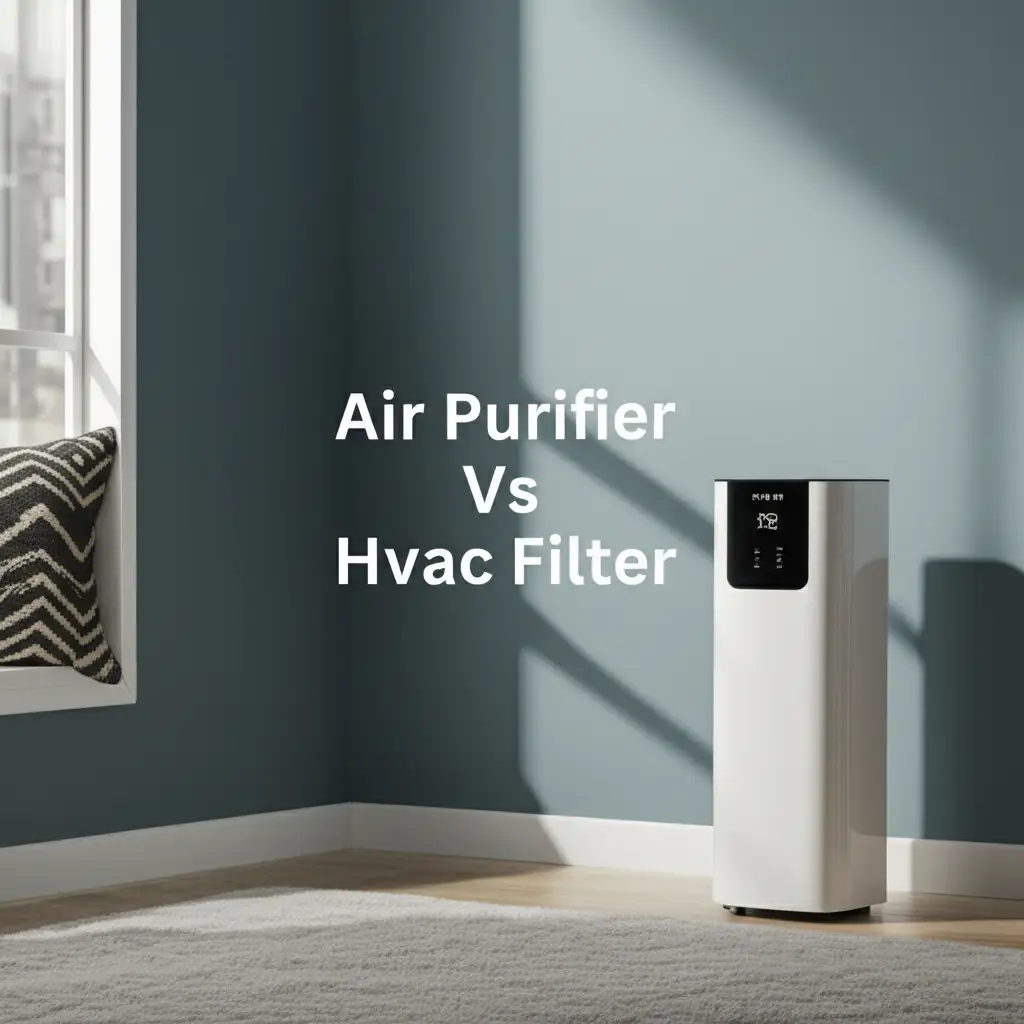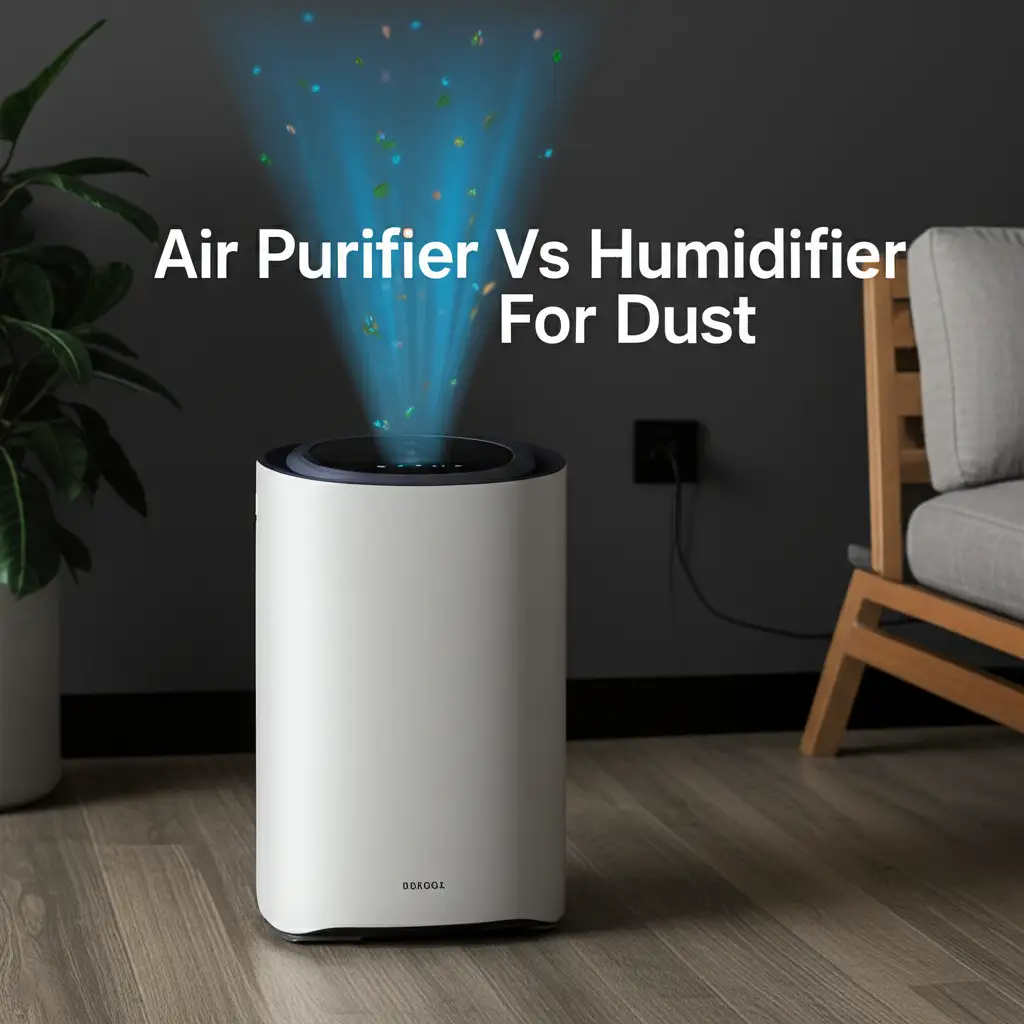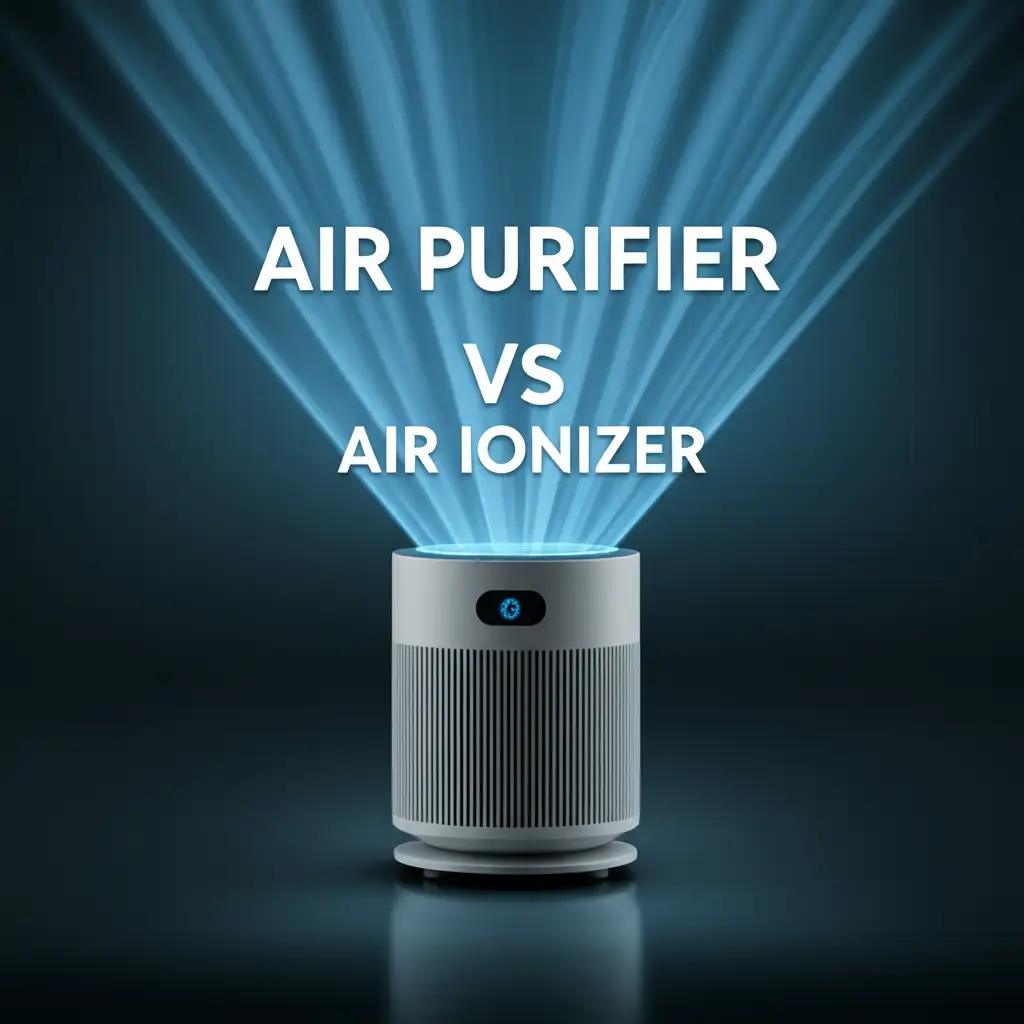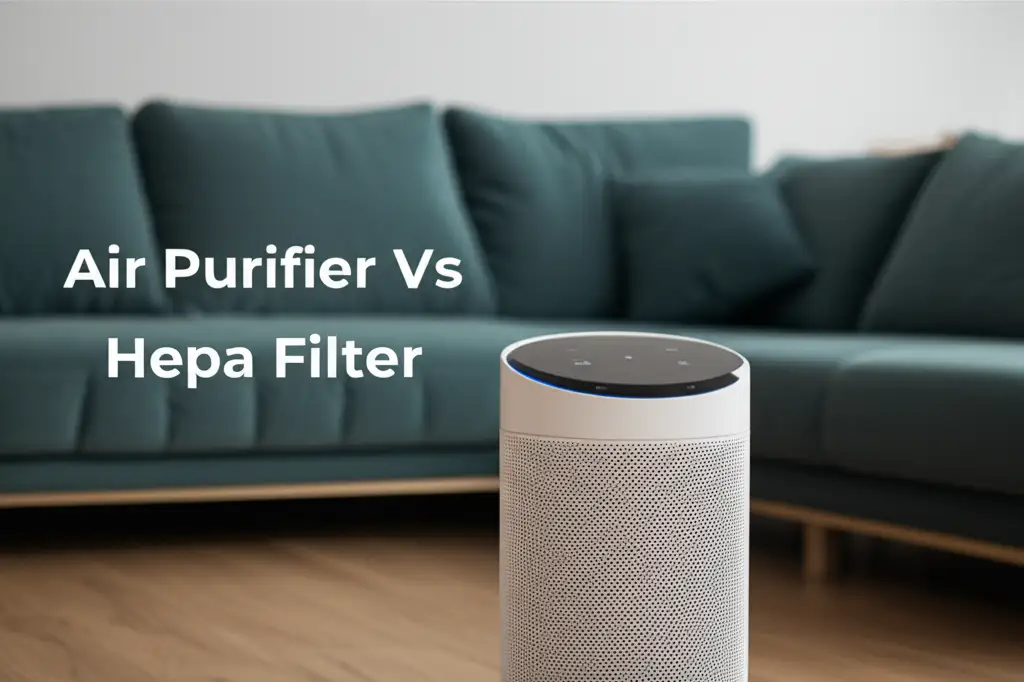· Elira Thomsen · Home Air Quality · 21 min read
Air Purifier Vs Weed Smoke
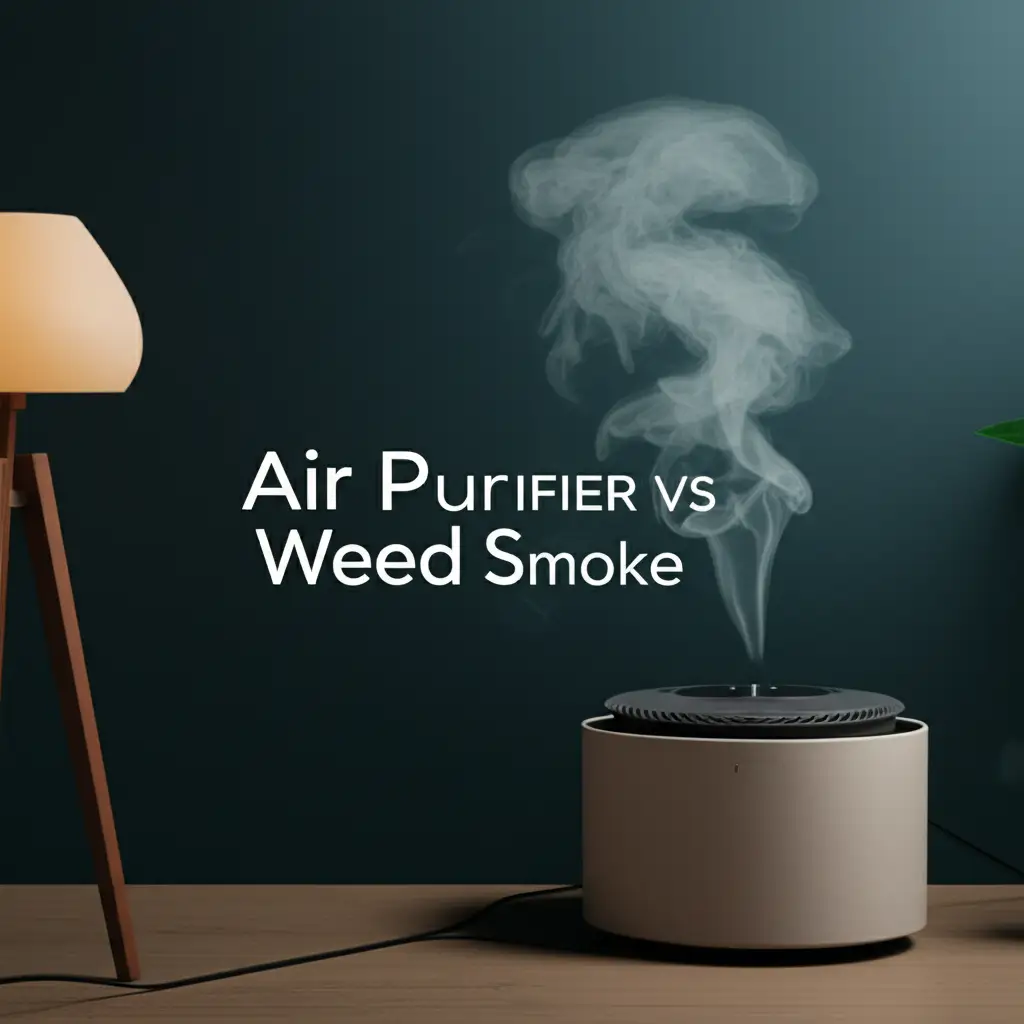
Mastering Weed Smoke: How Air Purifiers Clean Your Air
The distinct aroma of weed smoke can linger in the air. It often spreads beyond its source, affecting air quality and comfort in your home. You might wonder if an air purifier can truly help with this. Many people ask, “Can an air purifier handle weed smoke effectively?” The answer is yes, a good air purifier offers a significant solution. These devices work to capture particles and gases that make up cannabis smoke, helping to eliminate both visible smoke and the strong smell.
In this article, we will explore the challenges weed smoke presents to indoor air. We will also look at how air purifiers specifically combat these issues. I will explain the technologies that make air purifiers effective against smoke and odors. We will discuss what features to look for when choosing a device. You will also learn about other strategies to keep your home’s air fresh and clean. Let’s explore how air purifiers make a real difference against weed smoke.
Takeaway
- Target Smoke Particles: Air purifiers with true HEPA filters capture fine particulate matter from weed smoke effectively.
- Neutralize Odors: Activated carbon filters are essential for adsorbing the volatile organic compounds (VOCs) that cause marijuana smell.
- Choose Right Features: Look for high CADR ratings, multi-stage filtration (HEPA + activated carbon), and appropriate room size coverage.
- Maintain Regularly: Replace filters as recommended to ensure continuous, effective performance against smoke and odors.
- Combine Strategies: Use an air purifier with good ventilation and proactive cleaning for best results.
Can an air purifier effectively remove weed smoke and its odor from a room?
Yes, an air purifier can effectively remove weed smoke and its odor. High-quality models use multi-stage filtration, combining a true HEPA filter to trap smoke particles and an activated carbon filter to absorb the volatile organic compounds (VOCs) responsible for the distinct smell. This dual action significantly cleans the air.
The Chemistry of Cannabis Smoke: More Than Just an Odor
When cannabis burns, it releases more than just a distinctive smell. The smoke contains a mix of harmful substances. It includes fine particulate matter, volatile organic compounds (VOCs), and other gases. These components create indoor air pollution. Understanding these elements helps explain why weed smoke is hard to clear.
Fine particulate matter (PM2.5) consists of tiny solid and liquid particles. These particles are small enough to enter your lungs deeply. They are a major component of smoke, regardless of the source. This is what you see when smoke fills a room. VOCs are gas molecules that carry the strong odor. Terpenes, which give cannabis its unique aroma, are a type of VOC. Both particulate matter and VOCs need addressing to truly clean the air and remove the smell.
What Makes Weed Smoke So Persistent?
The persistence of weed smoke comes from its chemical makeup. The tiny smoke particles can settle on surfaces like furniture, curtains, and walls. These particles often carry the odor-causing VOCs. This means the smell can linger long after the smoke clears from the air. Fabrics and porous materials absorb these compounds. This makes the odor difficult to remove without thorough cleaning.
Standard air circulation from a fan does not eliminate these particles or VOCs. A fan simply moves the air around. This can spread the smoke and smell further. A fan cannot trap or neutralize smoke components. For true purification, you need a system designed to filter these elements out of the air. This highlights the difference between an air purifier and a fan. Air purifiers actively clean the air, while fans just move it. Consider reading more about air purifier vs fan to understand their distinct roles in air quality.
How Air Purifiers Combat Smoke: Filtration Technologies
Air purifiers use specific technologies to clean the air. Not all air purifiers are the same. For smoke, you need certain types of filters. These filters work together to remove both visible particles and invisible odors. Understanding these technologies helps you choose the right device.
The most important filters for smoke are HEPA and activated carbon. These work in different ways to address the components of weed smoke. They are the core of an effective smoke-reducing air purifier. Some purifiers also use ionizers. It is important to know how each technology functions.
The Power of True HEPA Filters Against Particles
A true HEPA filter is vital for smoke removal. HEPA stands for High-Efficiency Particulate Air. These filters can capture 99.97% of airborne particles as small as 0.3 microns. Smoke particles, including those from weed, fall within this size range. This means a HEPA filter effectively traps visible smoke.
The filter material is a dense mat of fibers. Air flows through, and particles get caught in the fibers. This process is highly effective for solid airborne contaminants. Without a true HEPA filter, an air purifier cannot fully remove smoke. You can learn more about how these filters work by reading about air purifier vs HEPA filter. This will give you a deeper understanding of particle capture.
Activated Carbon Filters for Odor Elimination
While HEPA filters capture particles, they do not remove odors. Odors come from volatile organic compounds (VOCs) that are gas molecules. For these, you need an activated carbon filter. Activated carbon is a porous material. It has many tiny pores. These pores act like sponges for gas molecules.
Activated carbon removes odors through a process called adsorption. Gas molecules, like those causing the weed smell, stick to the surface of the carbon. This traps the smell and removes it from the air. The more activated carbon a filter has, the more odors it can absorb. For effective weed smell removal, a thick layer of granular activated carbon is necessary. This is different from a thin mesh.
Understanding Other Filtration Methods (and their limitations)
Some air purifiers use other methods. These include pre-filters, UV-C light, and ionizers. A pre-filter captures larger particles like dust and hair. This protects the HEPA filter and extends its life. UV-C light can kill bacteria and viruses, but it does not directly remove smoke particles or odors.
Ionizers release charged ions into the air. These ions attach to airborne particles, making them heavier. The heavier particles then fall out of the air or get caught by a charged plate. Ionizers can help with particle removal. However, some ionizers produce ozone, which is a lung irritant. It is important to choose an air purifier that does not produce harmful levels of ozone. For a deeper look, consider reading about air purifier vs air ionizer to understand their differences and benefits. For effective weed smoke removal, HEPA and activated carbon are the primary technologies.
Air Purifier Effectiveness Against Weed Smoke: What to Expect
An air purifier can make a big difference in a smoky environment. However, expectations need to be realistic. A high-quality air purifier will significantly reduce smoke and odor. It will not make a room smell like fresh mountain air instantly if someone is actively smoking. It is a continuous cleaning process.
The effectiveness depends on several factors. These include the purifier’s specifications, the room size, and how much smoke is present. Understanding these factors helps you achieve the best results. I use my air purifier regularly, and I have seen firsthand how it improves air quality.
Realistic Expectations for Smoke and Odor Removal
An air purifier will clean the air over time. It cycles the air in the room, trapping particles and absorbing odors. You should expect a noticeable reduction in visible smoke and a significant decrease in the lingering smell. For best results, run the air purifier continuously. It is not a magic wand that instantly removes all traces of smoke the moment it appears.
If smoking happens frequently, the air purifier will work harder. Its filters will also need more frequent replacement. A room with heavy, constant smoke will require a more powerful unit. Occasional smoke will be easier for an average unit to handle. Think of it as a constant battle against air pollution.
CADR Rating: Your Key Performance Indicator
The Clean Air Delivery Rate (CADR) is a crucial metric. It tells you how quickly an air purifier cleans a room. CADR measures the volume of clean air delivered by the purifier. It is expressed in cubic feet per minute (CFM). Higher CADR numbers mean faster cleaning.
For smoke, look for a high CADR for smoke. Manufacturers often provide separate CADR ratings for smoke, dust, and pollen. Choose a CADR rating appropriate for your room size. The room size coverage listed on the purifier should match or exceed your room’s square footage. A higher CADR means the unit can handle more smoke faster.
Room Size and Placement Considerations
The size of your room directly impacts the purifier’s performance. An air purifier designed for a small bedroom will struggle in a large living room. Always match the purifier’s recommended coverage area to your room’s dimensions. Placing the air purifier in a central location in the room is best. This allows it to draw in air from all directions.
Avoid placing it in a corner or directly against a wall. This can restrict airflow. For severe smoke issues, you might need multiple units in a large open space. Proper placement maximizes the air purifier’s ability to clean the entire room. Think about where the smoke is most concentrated. Place the unit near that area if possible, but still allow for good circulation.
Choosing the Right Air Purifier for Cannabis Odor: Key Features
Selecting the ideal air purifier for cannabis odor requires careful thought. You cannot just pick any model off the shelf. Certain features are non-negotiable for tackling smoke and its strong smell. My experience shows that investing in the right technology pays off in terms of air quality.
The focus should be on specific filtration types and overall power. Overlooking these details can lead to disappointment. I will guide you through the essential features to look for. This helps you make an informed decision.
Multi-Stage Filtration: The Ultimate Defense
For cannabis smoke and odor, multi-stage filtration is a must. This means the air passes through several types of filters. Each filter targets different pollutants. A typical multi-stage system includes:
- Pre-filter: This first layer catches large particles like dust, pet hair, and lint. It prevents these larger items from clogging the more delicate filters. This extends the life of your HEPA filter.
- True HEPA Filter: This is the core for removing smoke particles. As mentioned earlier, it traps tiny airborne particles. Ensure it is a “true HEPA” filter, not “HEPA-type” or “HEPA-like,” which may not offer the same efficiency.
- Activated Carbon Filter: This filter is critical for odor removal. It adsorbs the volatile organic compounds (VOCs) that cause the strong cannabis smell. Look for a generous amount of granular activated carbon. Thin carbon meshes are less effective.
These layers work together to clean the air comprehensively. The pre-filter protects the HEPA filter. The HEPA filter removes particles. The activated carbon filter eliminates odors. This layered approach is far superior to single-filter systems for smoke.
Granular Activated Carbon vs. Carbon Mesh
The type and amount of activated carbon matter significantly. Many air purifiers come with a thin carbon mesh. This mesh is often integrated with the pre-filter or HEPA filter. While it offers some odor reduction, it is usually insufficient for strong smells like cannabis smoke.
For effective odor elimination, you need a substantial amount of granular activated carbon. This type of filter contains loose carbon pellets. These pellets provide a much larger surface area for adsorption. A thick bed of granular carbon can absorb significantly more VOCs. This means it can remove more odors for longer periods. Always check the filter specifications. Look for filters that explicitly state “granular activated carbon” and list the weight of carbon included.
Air Changes Per Hour (ACH)
Air Changes Per Hour (ACH) tells you how many times an air purifier can clean the entire volume of air in a room within one hour. For smoke, a higher ACH rating is better. Aim for at least 4-5 ACH. This means the purifier cleans the air in the room every 12 to 15 minutes.
A higher ACH rating ensures that smoke and odors are removed quickly and continuously. If you are a regular smoker or live with one, a unit with 5 ACH or more provides superior performance. This rapid air turnover keeps the air much cleaner.
Noise Level and Additional Features
Consider the noise level of the air purifier. Many models have multiple fan speeds. Higher speeds often mean more noise. Look for models with a low noise output on their lowest settings. This is important if you plan to run the purifier in a bedroom or living area. Noise is measured in decibels (dB). A quieter unit might operate below 30 dB on its lowest setting.
Additional features can enhance usability. These include:
- Filter life indicators: These alert you when filters need replacement.
- Timer functions: This allows you to set the purifier to run for a specific duration.
- Auto mode: Some units have sensors that detect air quality and adjust fan speed automatically.
- Portability: Wheels or handles make it easy to move the unit between rooms.
While not directly related to purification power, these features improve convenience and user experience.
Beyond Air Purifiers: Other Strategies for Smoke Control
While an air purifier is a powerful tool against weed smoke, it works best as part of a broader strategy. Relying solely on a purifier might not fully address all aspects of smoke control. Combining it with other practices helps achieve the freshest indoor air. I often suggest these combined approaches to my friends.
These additional methods enhance the purifier’s work. They deal with smoke at its source or prevent it from lingering. Thinking holistically about air quality always yields better results.
Ventilation: Your First Line of Defense
Proper ventilation is crucial. Opening windows and doors allows fresh air in and pushes smoky air out. This reduces the concentration of smoke particles and odors indoors. Cross-ventilation, where air flows through opposing openings, is most effective. Do this regularly, especially when smoking occurs.
Running exhaust fans in bathrooms or kitchens also helps. These fans pull air out of the house. This creates negative pressure, drawing fresh air in through other openings. Ventilation helps clear the bulk of the smoke quickly. It lessens the burden on your air purifier.
Cleaning Surfaces: Removing Lingering Residue
Smoke particles and odor-causing compounds settle on surfaces. These include walls, furniture, carpets, and drapes. An air purifier cleans the air, but it cannot remove residue from surfaces. Regular cleaning is essential to eliminate lingering smells.
- Wash fabrics: Curtains, cushion covers, and throw blankets should be washed regularly. Use a strong detergent.
- Wipe hard surfaces: Clean walls, tables, and other non-porous surfaces with an appropriate cleaner. A mix of vinegar and water can be effective.
- Vacuum and shampoo carpets: Carpets can trap a lot of smoke particles and odors. Vacuum frequently. Consider steam cleaning or professional carpet shampooing periodically.
Ignoring surface cleaning means the odor will persist. Even with an air purifier, the smell can leach back into the air from dirty surfaces.
Odor Absorbers and Neutralizers
Certain products can help absorb or neutralize odors. These are not air purifiers, but they can supplement them. Examples include:
- Activated charcoal bags: These bags contain activated charcoal. They can absorb odors in small areas like closets or drawers. They are a passive solution.
- Odor neutralizing sprays: Some sprays do not just mask odors. They contain chemicals that chemically neutralize odor molecules. Use these cautiously and in well-ventilated areas.
- Baking soda: A classic odor absorber. Place open boxes of baking soda in rooms to absorb smells from the air and surfaces.
These methods offer passive or temporary relief. They do not remove airborne particles like an air purifier. They work best in conjunction with an active purification system.
HVAC System Filters
Consider upgrading your home’s HVAC system filter. While a standard HVAC filter is not an air purifier, a higher-MERV (Minimum Efficiency Reporting Value) filter can trap more airborne particles. This includes some larger smoke particles. However, standard HVAC systems are designed for general air circulation and basic filtration. They do not have the activated carbon necessary for odor removal. They also do not cycle air as rapidly as a dedicated room air purifier.
A good HVAC filter can reduce the overall particulate load in your home. This benefits general air quality. However, for direct weed smoke, a standalone air purifier is more effective. You can learn more about the differences by researching air purifier vs HVAC filter. Understanding both systems helps you create a comprehensive air quality plan for your home.
Maintenance and Placement for Optimal Performance
Getting the right air purifier is only half the battle. To ensure it works effectively against weed smoke, proper maintenance and strategic placement are key. Neglecting these aspects means your purifier will not perform its best. I always advise my clients on these crucial steps.
Regular upkeep extends the life of your unit. It also guarantees consistent air cleaning. Correct placement maximizes its reach and efficiency in your home.
Regular Filter Replacement: A Non-Negotiable Step
Air purifier filters have a finite lifespan. As they capture particles and absorb odors, they become saturated. A clogged HEPA filter cannot trap new particles. A saturated activated carbon filter cannot adsorb more odors. When filters are full, the purifier becomes less effective. It may even start to circulate stale air.
Check your user manual for recommended filter replacement schedules. This typically ranges from 6 to 12 months for HEPA filters. Activated carbon filters might need changing more frequently, especially with heavy smoke exposure. Some purifiers have indicator lights. Ignoring these alerts will compromise your air quality. Think of it like changing the oil in your car; it’s essential for performance.
Cleaning Pre-Filters and Exterior
Most air purifiers have a washable pre-filter. This outer layer traps larger dust, hair, and lint. Cleaning it regularly is important. A clogged pre-filter reduces airflow to the main filters. This makes the purifier work harder and reduces its efficiency.
Check the pre-filter every few weeks. If it is washable, rinse it under running water. Let it dry completely before putting it back. If it is not washable, vacuum it gently. Also, wipe down the exterior of the unit. Dust can accumulate on the grilles, blocking airflow. Keep the intake and output vents clear for optimal circulation.
Strategic Placement for Maximum Airflow
The placement of your air purifier significantly impacts its effectiveness. Place the unit in the room where smoking occurs most often. This allows it to address the source directly. A central location in the room is usually best. This enables it to draw air from all sides.
Avoid placing the purifier:
- In a corner: This restricts airflow and reduces coverage.
- Against a wall: Similar to corners, this can hinder air circulation.
- Behind furniture: Obstructions block the intake and output of air.
- Near open windows/doors (unless for ventilation): If windows are constantly open, the purifier will be trying to clean outdoor air. Use ventilation with the purifier, not against it.
Ensure there is adequate space around the unit for air to circulate freely. Elevating the unit slightly, if possible, can also improve its reach. My own experience shows that a well-placed purifier makes a noticeable difference faster.
Health Implications of Secondhand Smoke and Air Purification Benefits
Exposure to secondhand weed smoke carries health risks. Just like tobacco smoke, it contains harmful chemicals and particulate matter. Understanding these risks highlights the importance of clean air. An air purifier helps mitigate these dangers, providing a safer home environment.
Protecting indoor air quality is a matter of health. The benefits of using an air purifier go beyond just removing odors. They extend to safeguarding the well-being of everyone in the home.
The Dangers of Secondhand Cannabis Smoke
Secondhand cannabis smoke contains many of the same toxic chemicals as tobacco smoke. These include carcinogens and fine particulate matter (PM2.5). Breathing in PM2.5 can irritate the lungs and lead to respiratory problems. Long-term exposure increases the risk of lung disease and heart conditions.
Children and individuals with existing respiratory issues, like asthma, are especially vulnerable. Even a small amount of exposure can trigger symptoms or worsen conditions. The terpenes and other compounds in cannabis smoke also act as irritants. Simply airing out a room does not remove all these microscopic hazards.
Reducing PM2.5 and VOC Exposure
An air purifier with a true HEPA filter effectively captures PM2.5 particles. This significantly reduces the amount of harmful particulate matter circulating in the air. By removing these tiny particles, the risk of respiratory irritation decreases. This protects the lungs of everyone present.
The activated carbon filter targets VOCs. These compounds are responsible for the lingering smell. More importantly, some VOCs are harmful to health. They can cause headaches, nausea, or irritate the eyes, nose, and throat. By adsorbing VOCs, the air purifier improves overall air quality. It creates a healthier breathing environment free from these gaseous pollutants.
Creating a Healthier Indoor Environment
Using an air purifier contributes to a healthier living space. It cleans the air you breathe every day. This is especially important for shared living spaces. It reduces the impact of indoor air pollution on all occupants. A cleaner air environment can lead to:
- Fewer respiratory issues: Less particulate matter means fewer triggers for asthma or allergies.
- Improved sleep: A fresh-smelling room promotes better rest.
- Overall comfort: Breathing clean air just feels better.
Investing in an air purifier is an investment in health. It actively works to remove harmful elements from the air. This ensures a safer, more comfortable home for all residents.
Frequently Asked Questions About Air Purifiers and Weed Smoke
1. Can any air purifier remove weed smoke?
No, not just any air purifier. You need a model specifically designed for smoke and odors. Look for units with a true HEPA filter for particulate matter and a substantial activated carbon filter for odors. Standard air filters or basic purifiers without these specific components will not be effective against cannabis smoke.
2. How long does an air purifier take to clear weed smoke?
The time it takes depends on the purifier’s CADR rating, room size, and smoke density. A powerful unit in a matching room size can significantly clear visible smoke in 15-30 minutes. Odors might take longer, sometimes an hour or more, especially if embedded in fabrics. Continuous use provides the best results.
3. Will an air purifier completely eliminate the weed smell?
A high-quality air purifier with a robust activated carbon filter can significantly reduce and often eliminate the airborne weed smell. However, if the odor has absorbed into porous surfaces like walls, carpets, or furniture, the purifier cannot remove those embedded smells. You will need to combine it with thorough cleaning.
4. Do air purifiers help with secondhand smoke from weed?
Yes, air purifiers with true HEPA filters are very effective at capturing the fine particulate matter (PM2.5) in secondhand weed smoke. This reduces the health risks associated with breathing in these tiny particles. The activated carbon filter also removes the gaseous compounds, improving overall air quality for everyone.
5. Are ozone-generating air purifiers safe for smoke?
Ozone-generating air purifiers are generally not recommended for smoke or any air purification. Ozone is a lung irritant and can be harmful to respiratory health, even at low levels. While ozone can neutralize some odors, the health risks outweigh the benefits. Always choose an ozone-free air purifier.
6. How often should I replace air filters when dealing with weed smoke?
When dealing with weed smoke, you will likely need to replace filters more often than recommended for general use. Activated carbon filters can saturate quickly with strong odors. Check your filters monthly. You might need to replace carbon filters every 3-6 months and HEPA filters every 6-9 months, depending on the frequency and intensity of smoking.
Conclusion
Controlling weed smoke and its lingering odor in your home is a common concern. As we have explored, a high-quality air purifier stands as your primary defense. These devices, especially those featuring true HEPA and robust activated carbon filters, effectively capture harmful particulate matter and eliminate the pervasive smell. They actively clean your air, transforming a smoky environment into a fresher, more comfortable living space.
Remember, the right air purifier is one specifically chosen for its capacity to handle smoke. Look for units with high CADR ratings and multi-stage filtration. Also, remember that proper maintenance, like regular filter changes and strategic placement, maximizes your purifier’s effectiveness. While an air purifier is a powerful tool, combining it with good ventilation and consistent surface cleaning offers the best results. Investing in an air purifier helps you maintain excellent indoor air quality. This protects your health and creates a more pleasant home for everyone. Take control of your air today. Explore our range of air purifiers and find the perfect solution for your needs.


